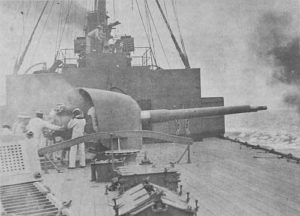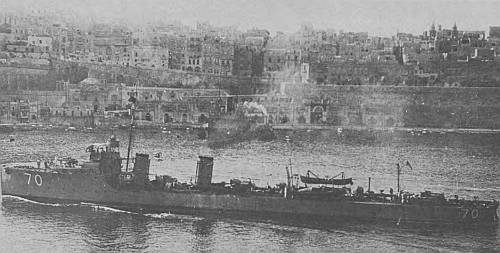- Author
- Henderson, Captain C.W.
- Subjects
- Early warships, Ship histories and stories
- Tags
-
- RAN Ships
- HMAS Encounter I, HMAS Warrego I, HMAS Yarra I, HMAS Australia I, HMAS Sydney I, HMAS Parramatta I, HMAS Melbourne I
- Publication
- August 1972 edition of the Naval Historical Review (all rights reserved)
In January 1922 the American fourmasted schooner Helen B. Sterling was dismasted and in a sinking condition during a heavy gale in the Tasman. With superb seamanship and great daring, HMAS Melbourne rescued the schooner’s sodden 22 man crew.

Next in line of arrival was HMAS Sydney. A Chatham class cruiser, she was built in 1912 and came out in 1913. Similar in tonnage, speed and armament to the Melbourne, she sank the German raider Emden off the Cocos Islands in November 1914. Paid off in 1928, she was handed over to the shipbreakers in 1929.
She is commemorated by a tripod mast at Bradley’s Head, and a section of her bow under the north pylon of Sydney Harbour Bridge as well as some interesting relics held at Snapper Island Sea Training Depot. Following up in line astern came the Encounter, a second-class protected cruiser. Of 5,800 tons and speed of 21 knots, she was built at Devonport in 1902. She was acquired by the RAN from the RN in 1912. The first prize of war was taken by the Encounter, the Zambesi, a British steamer the Germans had captured. She was for a time the only cruiser defending our shores during a critical period. Later renamed HMAS Penguin, she became a familiar sight to regular Manly ferry travellers as a depot ship at Garden Island until 1929. She was scuttled off the Heads 18 years to the day on which she fired the first shot for the RAN in World War I.

HMAS Warrego was next astern of the Encounter in the important fleet’s entry. She was third of three destroyers to come out. The Warrego had the reputation of being the first warship to be built in Australia. She was shipped out in parts, put together at Cockatoo Island Dockyard in 1910 and commissioned in 1912. Following a very active service, Warrego was paid off in 1928, and handed over to the shipbreakers for dismantling in 1930. HMAS Parramatta, a World War I veteran, was a 700-ton destroyer, 250 feet long and with a speed of 24.5 knots. The story of how she achieved fame for the part she played in World War I has already been told. At present her remains lie hard ashore near Milson Island in the Hawkesbury. A proposal is under way to remove to the City of Parramatta a section of the old ship for permanent preservation by the Naval Historical Society.
Bringing up the rear of the memorable fleet of October 4 1913 was the torpedoboat destroyer Yarra. Of 700 tons and 9,000 horsepower, she was built in 1910. Like the Parramatta, she also made her name famous throughout World War I. In 1930 she ended a notable career by being handed over to the shipbreakers for dismantling. On August 22 1922, her remains were towed out to the ships’ graveyard off the Heads, and there sent down to Davy Jones’ Locker, 600 feet below.




